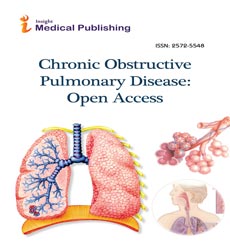Abstract
Ventilation/Perfusion Mismatch: A Novel Target for COPD Treatment
In people with chronic obstructive pulmonary disease (COPD), pulmonary gas-exchange efficiency may be impaired due to abnormal alveolar ventilation (VA) and/or capillary perfusion (Qc), both of which have been reported in early and mild stages of the disease. Such abnormalities often accompany significant clinical consequences such as activity-related dyspnea and exercise intolerance. Although much attention has been paid to pharmacological treatment of mechanical abnormalities (e.g., bronchodilators to deflate the lungs) in COPD, increasing neurochemical afferent activity, secondary to gas-exchange inefficiency, has remained elusive as a therapeutic target. Hence, in this invited review, we first summarize how dyspnea, leading to poor exercise tolerance in COPD may be explained by an increased venous admixture due to low VA/Qc and/or wasted ventilation related to high VA/Qc. We review the conflicting evidence supporting current treatments for gas-exchange inefficiency and exercise tolerance which act primarily on VA (bronchodilators, anti-inflammatory medications) or Qc (oral and inhaled vasodilators, almitrine and supplemental oxygen). Finally, to address the current knowledge and health-care gaps, we propose two independent clinical research foci that may lead to a better understanding of the role of pulmonary gas-exchange efficiency and activity-related dyspnea in COPD: 1) improved and deeper phenotyping of COPD patients with VA/Qc abnormalities, and, 2) evaluation of existing and novel pharmacological treatments in relation to improved gas-exchange inefficiency, exertional dyspnea, and exercise tolerance across the spectrum of COPD severity.
Author(s): Md Shahariar
Abstract | Full-Text | PDF
Share this

Awards Nomination
Google scholar citation report
Citations : 130
Abstracted/Indexed in
- Google Scholar
- China National Knowledge Infrastructure (CNKI)
- Publons
- Geneva Foundation for Medical Education and Research
- Secret Search Engine Labs
Open Access Journals
- Aquaculture & Veterinary Science
- Chemistry & Chemical Sciences
- Clinical Sciences
- Engineering
- General Science
- Genetics & Molecular Biology
- Health Care & Nursing
- Immunology & Microbiology
- Materials Science
- Mathematics & Physics
- Medical Sciences
- Neurology & Psychiatry
- Oncology & Cancer Science
- Pharmaceutical Sciences

